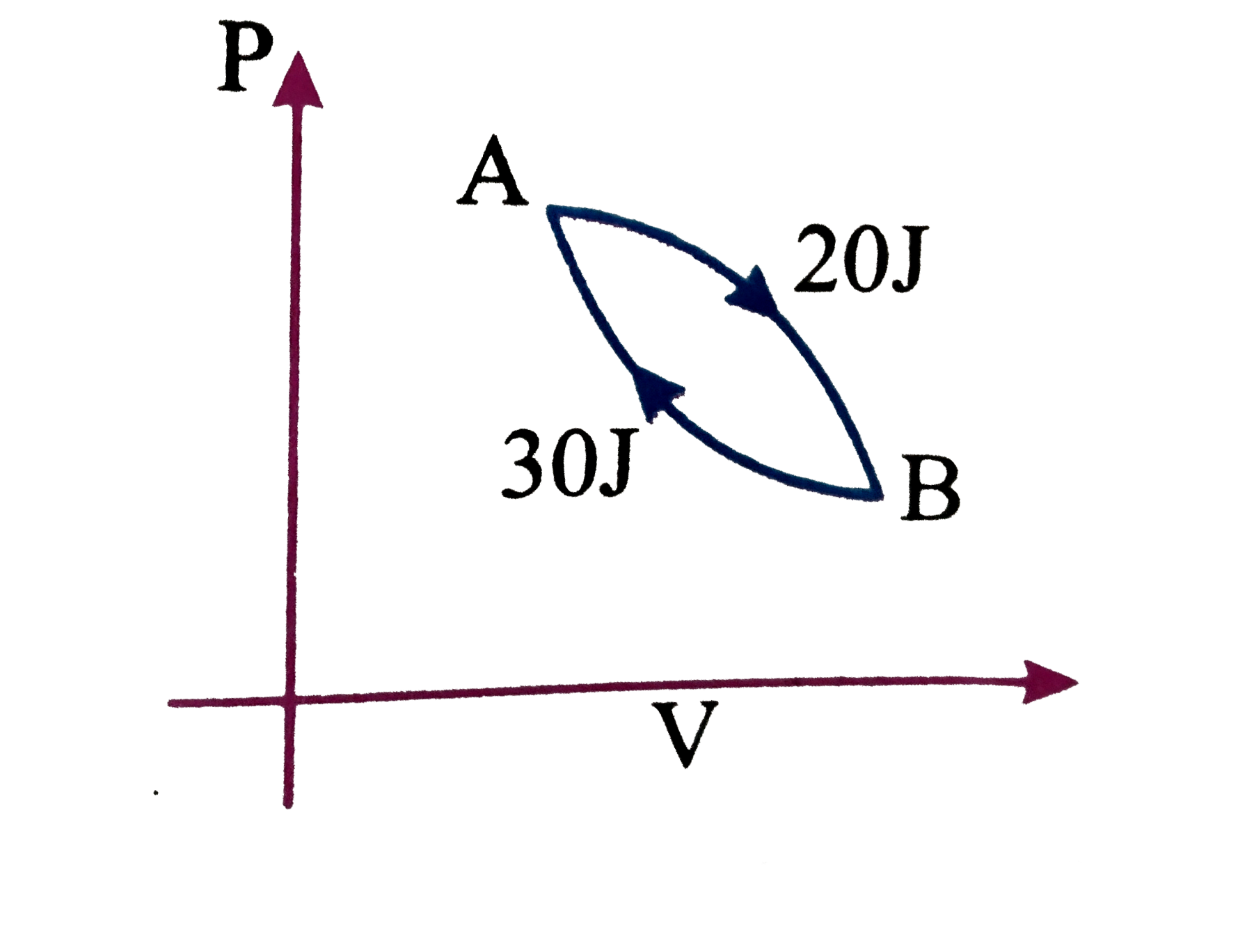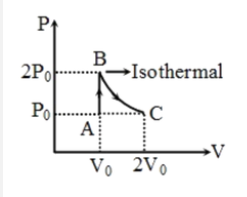when He gas ballon explodes,then process is
Reversible isothermal
irreversible isothermal
reversible adiabatic
irreversible adiabatic
To determine the nature of the process when a helium gas balloon explodes, let's analyze the situation step by step.
1. Understanding the Explosion of the Balloon:
- When a helium gas balloon explodes, it does so almost instantaneously. The explosion occurs rapidly, leading to a sudden release of gas.
Hint: Think about how quickly the balloon bursts and how that affects the surrounding environment.
2. Heat Exchange Consideration:
- During the explosion, the process is so rapid that there is no significant heat exchange between the helium gas inside the balloon and the surrounding environment. This means that the temperature of the gas does not change due to heat transfer.
Hint: Recall the definition of adiabatic processes where there is no heat transfer.
3. Identifying the Type of Process:
- Since there is no heat exchange, we classify this as an adiabatic process.
- Additionally, the nature of the explosion can be considered as a free expansion. In free expansion, the gas expands into a vacuum without doing work on the surroundings.
Hint: Remember that free expansion is typically associated with irreversible processes.
4. Reversibility of the Process:
- Although free expansion is generally irreversible, the term "reversible" can sometimes be used in a theoretical context to describe processes that could be reversed if certain conditions were met. However, in practical terms, the explosion itself is irreversible.
Hint: Think about the implications of a process being reversible versus irreversible in thermodynamics.
5. Conclusion:
- Given that the explosion is an instantaneous process with no heat exchange, and it is irreversible, we conclude that the process when a helium gas balloon explodes is best described as an irreversible adiabatic process.
Final Answer:
The correct answer is irreversible adiabatic.
- When a helium gas balloon explodes, it does so almost instantaneously. The explosion occurs rapidly, leading to a sudden release of gas.
- During the explosion, the process is so rapid that there is no significant heat exchange between the helium gas inside the balloon and the surrounding environment. This means that the temperature of the gas does not change due to heat transfer.
- Since there is no heat exchange, we classify this as an adiabatic process.
- Additionally, the nature of the explosion can be considered as a free expansion. In free expansion, the gas expands into a vacuum without doing work on the surroundings.
- Although free expansion is generally irreversible, the term "reversible" can sometimes be used in a theoretical context to describe processes that could be reversed if certain conditions were met. However, in practical terms, the explosion itself is irreversible.
- Given that the explosion is an instantaneous process with no heat exchange, and it is irreversible, we conclude that the process when a helium gas balloon explodes is best described as an irreversible adiabatic process.
The correct answer is irreversible adiabatic.
Similar Questions
Knowledge Check
The specific heat of a gas in an isothermal process is
AinfiniteBzeroCnegativeDremains constant
When the gas is ideal and process is isothermal, then
View SolutionStatement 1: Heat supplied to a gas is process is 100 J and work done by the gas in the same process is 120 J, then pressure of he gas in the process should increase.
because
Statement2: Work done by the gas is greater than the heat supplied to the gas. Hence, internal energy of the gas should decrease.
View SolutionIn a cyclic process shown in the figure an ideal gas is adiabatically taken from BtoA, the work done on the gas during the process BtoA is 30,J when the gas is taken from A to B the heat absorbed by the gas is 20J Then change in internal energy of the gas in the process A to B is :

View SolutionIn a cyclic process shown in the figure an ideal gas is adiabatically taken from BtoA, the work done on the gas during the process BtoA is 30,J when the gas is taken from A to B the heat absorbed by the gas is 20J Then change in internal energy of the gas in the process A to B is :

View SolutionIn a cyclic process shown in the figure an ideal gas is adiabatically taken from BtoA, the work done on the gas during the process BtoA is 30,J when the gas is taken from A to B the heat absorbed by the gas is 20J Then change in internal energy of the gas in the process A to B is :

View Solution10 ml of a mixture of carbon monoxide, marsh gas and hydrogen exploded with excess of oxygen gave a contraction of 6.5 CC. There was further contraction of 7 CC when the residual gas was treated with caustic potash. The volume of marsh gas present in original mixture is
View SolutionAn ideal gas is taken through a process PT3= constant. The coefficient of thermal expansion of the gas in the given process is
View Solution

